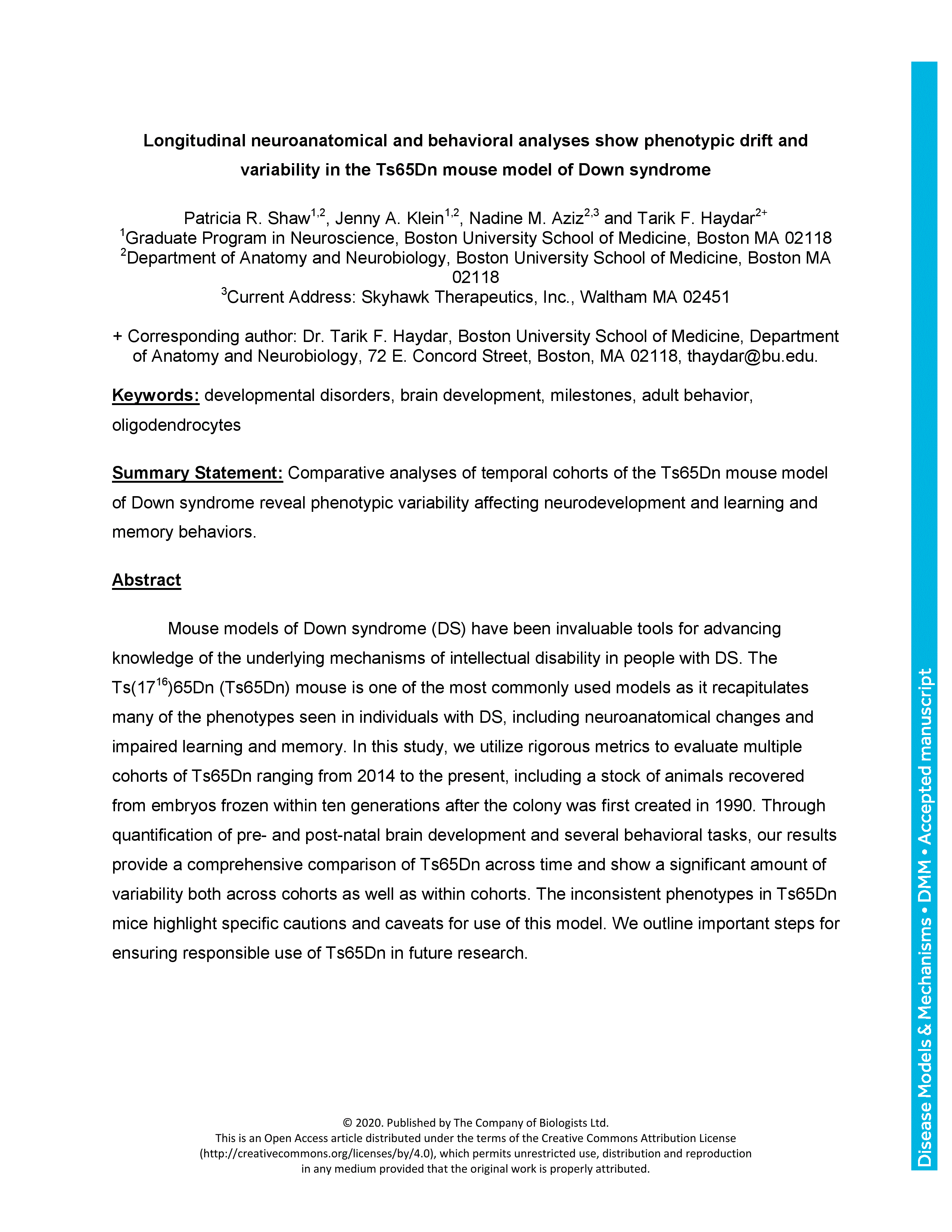Mouse models of Down syndrome (DS) have been invaluable tools for advancing knowledge of the underlying mechanisms of intellectual disability in people with DS. The Ts(1716)65Dn (Ts65Dn) mouse is one of the most commonly used models as it recapitulates many of the phenotypes seen in individuals with DS, including neuroanatomical changes and impaired learning and memory. In this study, we utilize rigorous metrics to evaluate multiple cohorts of Ts65Dn ranging from 2014 to the present, including a stock of animals recovered from embryos frozen within ten generations after the colony was first created in 1990. Through quantification of pre- and post-natal brain development and several behavioral tasks, our results provide a comprehensive comparison of Ts65Dn across time and show a significant amount of variability both across cohorts as well as within cohorts. The inconsistent phenotypes in Ts65Dn mice highlight specific cautions and caveats for use of this model. We outline important steps for ensuring responsible use of Ts65Dn in future research.
Longitudinal neuroanatomical and behavioral analyses show phenotypic drift and variability in the Ts65Dn mouse model of Down syndrome
Present Address: Skyhawk Therapeutics, Inc., Waltham MA 02451, USA
Currently Viewing Accepted Manuscript - Newer Version Available
Patricia R. Shaw, Jenny A. Klein, Nadine M. Aziz, Tarik F. Haydar; Longitudinal neuroanatomical and behavioral analyses show phenotypic drift and variability in the Ts65Dn mouse model of Down syndrome. Dis Model Mech 2020; dmm.046243. doi: https://doi.org/10.1242/dmm.046243
Download citation file:
Advertisement
Sex matters in preclinical research

DMM calls for improved inclusion, analysis and reporting of sex as a biological variable in preclinical animal modelling research. Read the full Editorial by Monica J. Justice.
Subject collection: Building advocacy into research

DMM’s new series - Building advocacy into research - features interviews, ‘The Patient’s Voice’, with patients and advocates for a range of disease types, with the aim of supporting the highest quality research for the benefit of all patients affected by disease.
Travelling Fellowships for early-career researchers

DMM and its sister journals offer Travelling Fellowships of up to £3,000 to graduate students and post-doctoral researchers wishing to make collaborative visits to other laboratories. Find out more about our Travelling Fellowships and read stories from previous grant recipients.
Read & Publish Open Access publishing: what authors say

We have had great feedback from authors who have benefitted from our Read & Publish agreement with their institution and have been able to publish Open Access with us without paying an APC. Read what they had to say.
The Forest of Biologists
Our Publisher Claire Moulton recently visited the two Woodland Trust UK sites where we are planting new native trees for published Research and Review papers and protecting ancient woodland on behalf of our peer reviewers.
Other journals from
The Company of Biologists



